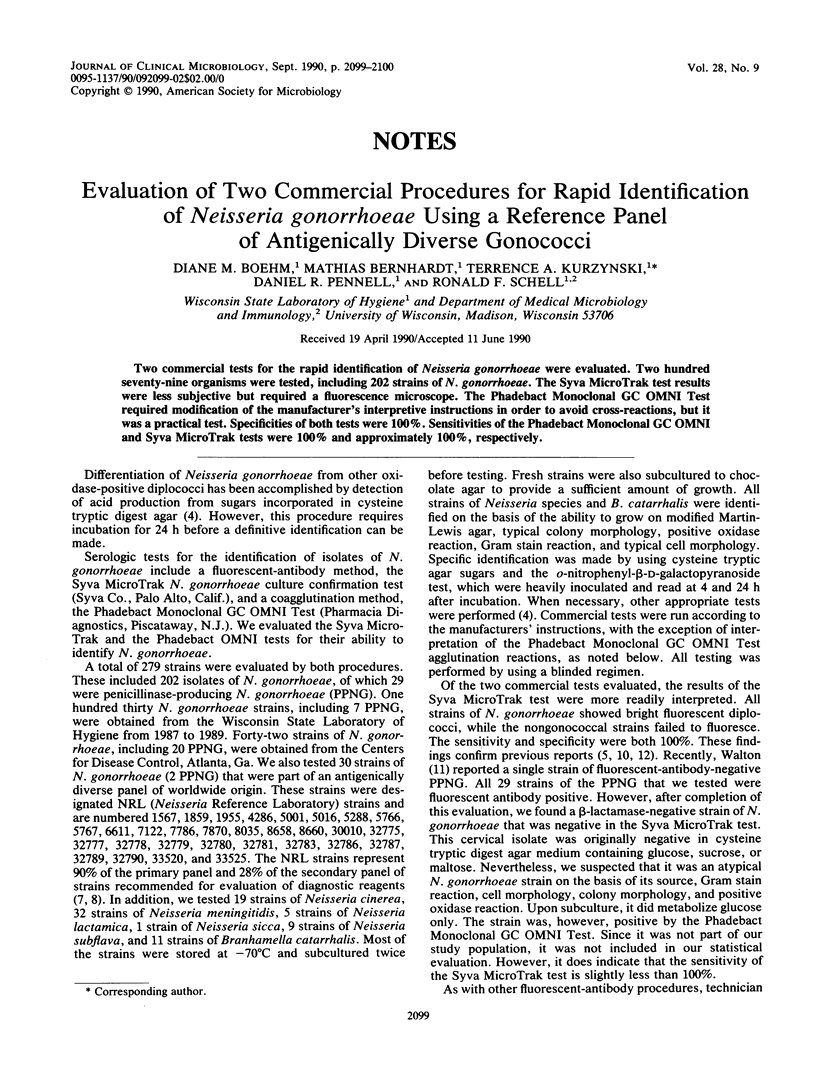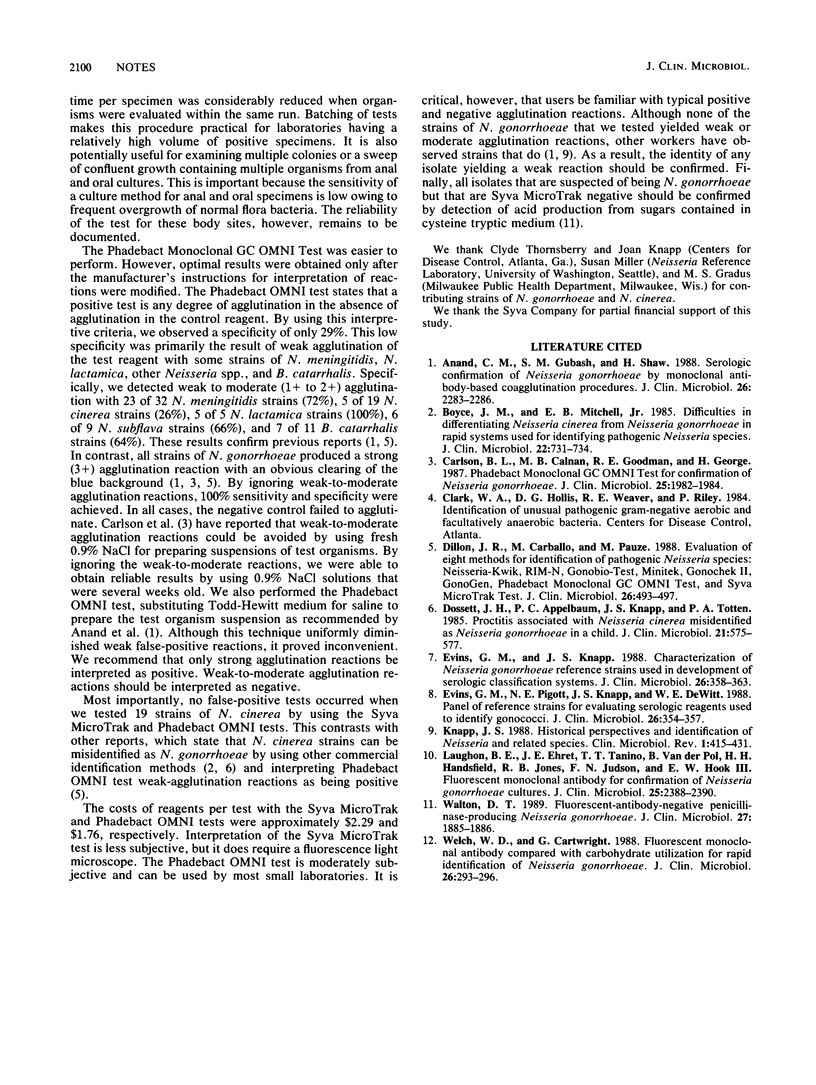Abstract
Two commercial tests for the rapid identification of Neisseria gonorrhoeae were evaluated. Two hundred seventy-nine organisms were tested, including 202 strains of N. gonorrhoeae. The Syva MicroTrak test results were less subjective but required a fluorescence microscope. The Phadebact Monoclonal GC OMNI Test required modification of the manufacturer's interpretive instructions in order to avoid cross-reactions, but it was a practical test. Specificities of both tests were 100%. Sensitivities of the Phadebact Monoclonal GC OMNI and Syva MicroTrak tests were 100% and approximately 100%, respectively.
Full text
PDF

Selected References
These references are in PubMed. This may not be the complete list of references from this article.
- Anand C. M., Gubash S. M., Shaw H. Serologic confirmation of Neisseria gonorrhoeae by monoclonal antibody-based coagglutination procedures. J Clin Microbiol. 1988 Nov;26(11):2283–2286. doi: 10.1128/jcm.26.11.2283-2286.1988. [DOI] [PMC free article] [PubMed] [Google Scholar]
- Boyce J. M., Mitchell E. B., Jr Difficulties in differentiating Neisseria cinerea from Neisseria gonorrhoeae in rapid systems used for identifying pathogenic Neisseria species. J Clin Microbiol. 1985 Nov;22(5):731–734. doi: 10.1128/jcm.22.5.731-734.1985. [DOI] [PMC free article] [PubMed] [Google Scholar]
- Carlson B. L., Calnan M. B., Goodman R. E., George H. Phadebact Monoclonal GC OMNI Test for confirmation of Neisseria gonorrhoeae. J Clin Microbiol. 1987 Oct;25(10):1982–1984. doi: 10.1128/jcm.25.10.1982-1984.1987. [DOI] [PMC free article] [PubMed] [Google Scholar]
- Dillon J. R., Carballo M., Pauzé M. Evaluation of eight methods for identification of pathogenic Neisseria species: Neisseria-Kwik, RIM-N, Gonobio-Test, Minitek, Gonochek II, GonoGen, Phadebact Monoclonal GC OMNI Test, and Syva MicroTrak Test. J Clin Microbiol. 1988 Mar;26(3):493–497. doi: 10.1128/jcm.26.3.493-497.1988. [DOI] [PMC free article] [PubMed] [Google Scholar]
- Dossett J. H., Appelbaum P. C., Knapp J. S., Totten P. A. Proctitis associated with Neisseria cinerea misidentified as Neisseria gonorrhoeae in a child. J Clin Microbiol. 1985 Apr;21(4):575–577. doi: 10.1128/jcm.21.4.575-577.1985. [DOI] [PMC free article] [PubMed] [Google Scholar]
- Evins G. M., Knapp J. S. Characterization of Neisseria gonorrhoeae reference strains used in development of serologic classification systems. J Clin Microbiol. 1988 Feb;26(2):358–363. doi: 10.1128/jcm.26.2.358-363.1988. [DOI] [PMC free article] [PubMed] [Google Scholar]
- Evins G. M., Pigott N. E., Knapp J. S., DeWitt W. E. Panel of reference strains for evaluating serologic reagents used to identify gonococci. J Clin Microbiol. 1988 Feb;26(2):354–357. doi: 10.1128/jcm.26.2.354-357.1988. [DOI] [PMC free article] [PubMed] [Google Scholar]
- Knapp J. S. Historical perspectives and identification of Neisseria and related species. Clin Microbiol Rev. 1988 Oct;1(4):415–431. doi: 10.1128/cmr.1.4.415. [DOI] [PMC free article] [PubMed] [Google Scholar]
- Walton D. T. Fluorescent-antibody-negative penicillinase-producing Neisseria gonorrhoeae. J Clin Microbiol. 1989 Aug;27(8):1885–1886. doi: 10.1128/jcm.27.8.1885-1886.1989. [DOI] [PMC free article] [PubMed] [Google Scholar]
- Welch W. D., Cartwright G. Fluorescent monoclonal antibody compared with carbohydrate utilization for rapid identification of Neisseria gonorrhoeae. J Clin Microbiol. 1988 Feb;26(2):293–296. doi: 10.1128/jcm.26.2.293-296.1988. [DOI] [PMC free article] [PubMed] [Google Scholar]


